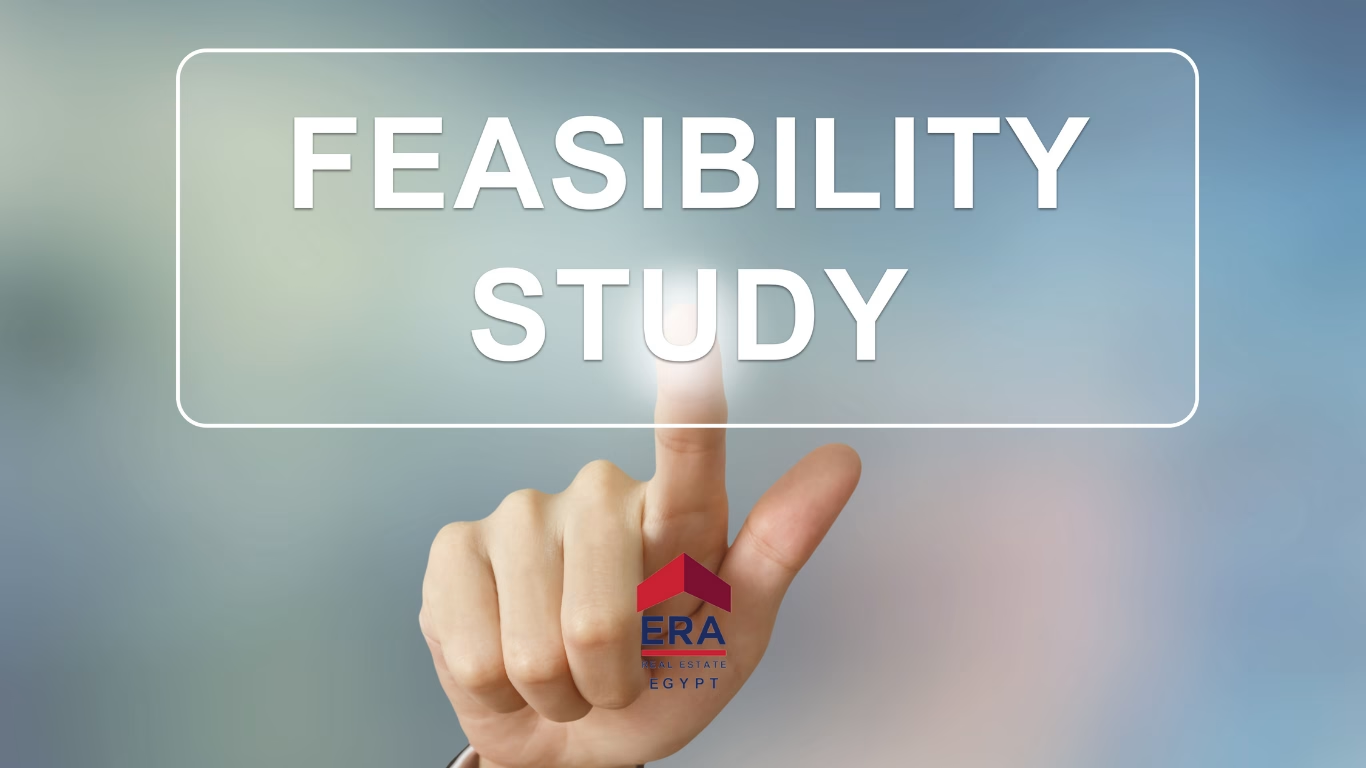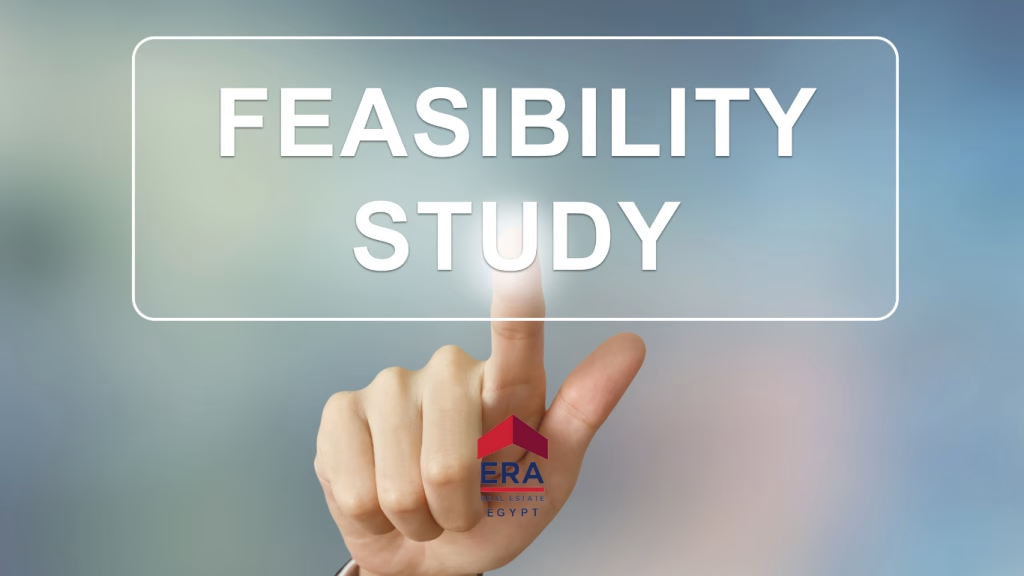Introduction
Overview of Real Estate Projects
Real estate projects encompass various categories, including residential developments, commercial spaces, and industrial facilities. Each project requires extensive planning, substantial investment, and accurate market analysis to ensure success. For anyone diving into the real estate market, understanding the scope of these projects is crucial, as they can vary from simple renovations to complex urban developments.

Significance of Maximizing ROI through Feasibility Studies
Conducting a feasibility study is pivotal in enhancing returns on investment (ROI). Here’s why:
- Risk Mitigation: Identifies potential obstacles early on.
- Resource Allocation: Ensures funds are directed towards viable projects.
- Informed Decision-Making: Provides a roadmap based on data-driven insights.
For instance, a developer in ERA Egypt used a feasibility study template to uncover an untapped market segment, resulting in a 30% increase in potential ROI. In the ever-evolving real estate landscape, leveraging these analyses can spell the difference between failure and success.
Understanding Feasibility Studies in Real Estate
Definition and Purpose of Feasibility Studies
A feasibility study in real estate is a comprehensive analysis that evaluates a proposed project’s viability. This essential tool helps stakeholders determine whether a project is financially and operationally viable before significant resources are committed.
The primary purposes include:
- Identifying Potential Issues: Addressing any hurdles that could derail development.
- Resource Planning: Contributing to smarter budgeting and scheduling decisions.
- Stakeholder Confidence: Building trust among investors through data-driven insights.
Factors Considered in Feasibility Analysis
When analyzing a project, numerous factors come into play, including:
- Market Demand: Understanding buyer or tenant needs.
- Location Analysis: Evaluating accessibility, neighborhood dynamics, and competition.
- Financial Projections: Estimating costs, revenues, and ROI.
For instance, a developer planning a residential complex in a competitive area must consider these variables meticulously. This thorough evaluation not only facilitates informed decision-making but also lays the groundwork for successful project execution.
Benefits of Conducting a Strategic Feasibility Study
Identifying Potential Risks and Opportunities
One of the standout benefits of a strategic feasibility study is its ability to pinpoint both risks and opportunities before project execution. This insight empowers stakeholders to navigate the complexities of real estate projects confidently.
Key advantages include:
- Foreseeing Financial Pitfalls: Anticipating budget overruns or market fluctuations.
- Spotting Market Gaps: Discovering demand for new amenities or services.
- Mitigating Delays: Addressing regulatory or environmental challenges early in the process.
Enhancing Decision-Making Process in Real Estate Projects
A well-conducted feasibility study dramatically enhances decision-making. It provides a detailed landscape of options and outcomes, guiding investors and developers toward more informed choices.
For example, after analyzing various scenarios for a commercial property, a developer may find that shifting the project focus could result in a higher ROI. This clarity ensures that each step taken aligns with the project’s strategic goals, making the journey through real estate development far more effective and rewarding.
Steps to Perform a Comprehensive Feasibility Study
Market Analysis and Demand Assessment
To kick off a feasibility study, a thorough market analysis and demand assessment are crucial. This step involves researching demographic trends, competitor analysis, and consumer preferences to understand the project’s potential market.
Key activities include:
- Surveys and Interviews: Gathering direct feedback from potential buyers or tenants.
- Competitor Analysis: Evaluating similar projects in the area to identify market saturation.
- Trend Analysis: Looking at growth patterns to predict future demand.
Financial Projections and Risk Assessment
Next, developing robust financial projections and conducting a risk assessment is essential. This stage will outline expected costs, revenues, and profitability timelines.
Considerations might include:
- Budget Estimation: Outlining expenditures on land, materials, and labor.
- Cash Flow Analysis: Mapping out income projections versus expenses over time.
- Sensitivity Analysis: Testing various scenarios to see how changes impact ROI.
Legal and Regulatory Compliance Evaluation
Lastly, evaluating legal and regulatory compliance ensures that your project aligns with local laws and standards. This includes zoning regulations, environmental assessments, and permits.
Core components might involve:
- Zoning Evaluations: Ensuring the project fits within local zoning laws.
- Permit Acquisition: Gathering necessary approvals to move forward.
- Environmental Assessments: Identifying potential ecological impacts.
Together, these steps create a comprehensive framework for assessing a project’s viability, ultimately setting it up for success.
Leveraging Technology for Enhanced Feasibility Study
Role of Data Analytics and Market Research Tools
In today’s fast-paced real estate market, leveraging cutting-edge technology can significantly enhance feasibility studies. Data analytics and market research tools provide invaluable insights that traditional methods may overlook.
Key benefits include:
- Real-Time Data Access: Instant updates on market trends and pricing changes.
- Consumer Behavior Analysis: Understanding buyer preferences through online surveys and social media trends.
- Competitive Analysis: Utilizing software to track competitors’ movements and assess their impact on your project.
For example, a real estate firm might use market research tools to pinpoint a unique demand in eco-friendly housing in their target area.
Incorporating Simulation Models for Predictive Analysis
Incorporating simulation models further enhances traditional feasibility studies. These models allow stakeholders to visualize project outcomes under various scenarios.
Features of simulation models include:
- Scenario Testing: Examining how external factors (like economic downturns) affect performance.
- Forecasting Tools: Predicting future sales and occupancy rates based on current data.
- Risk Management: Identifying potential losses in different scenarios, enabling better contingency planning.
By utilizing these advanced tools, developers can make more informed decisions, ultimately setting themselves up for greater success in their real estate ventures.
Case Studies and Examples of Successful ROI Maximization
Real-Life Applications of Feasibility Studies in Real Estate
Real-life applications of feasibility studies illuminate their value in maximizing ROI. For instance, a developer in ERA Egypt conducted a thorough feasibility study before launching a luxury residential project. By analyzing market demand and local competition, they identified a unique architectural style that appealed to buyers. This strategic approach led to full occupancy within six months of opening, yielding a 25% ROI.
- Key Takeaway: Tailoring projects to meet specific market demands can drive faster sales and higher profits.
Lessons Learned from Implementing Strategic Feasibility Analysis
From these successful ventures, several lessons emerge:
- Early Identification of Risks: Understanding hurdles early on allows for proactive planning.
- Data-Driven Decisions: Relying on market insights fosters confidence among investors.
- Adaptability: Flexibility in project design can lead to unexpected opportunities.
Overall, adopting strategic feasibility analysis not only enhances decision-making but also creates pathways for continuous improvement and sustainable growth in real estate ventures.
Integrating Feasibility Findings into Real Estate Project Planning
Aligning Feasibility Study Results with Project Objectives
Integrating feasibility findings into project planning is crucial for success. By aligning the results of the feasibility study with project objectives, developers can ensure that each phase of the project supports their overarching goals.
For example, if a feasibility study highlights a demand for affordable housing, the project should prioritize those developments. This alignment can involve:
- Setting Clear Objectives: Defining specific, measurable goals based on study insights.
- Stakeholder Engagement: Communicating findings with all team members to unify vision and strategy.
Incorporating Recommendations for Optimal ROI Generation
Additionally, incorporating recommendations from the feasibility study is vital for maximizing ROI. This could include:
- Design Adjustments: Modifying layouts or amenities to meet market demands.
- Strategic Pricing: Setting competitive prices based on market analysis.
For instance, a developer may discover that adding energy-efficient features significantly increases appeal and, subsequently, profitability. By embracing these recommendations, stakeholders can create a roadmap that not only meets but exceeds financial expectations, leading to enduring success in their real estate endeavors.
Monitoring and Evaluating ROI Post-Project Implementation
Measuring Actual Performance Against Feasibility Study Projections
Once a real estate project is completed, evaluating actual performance against the feasibility study projections becomes essential. This comparative analysis helps stakeholders understand whether the project met its goals and identify areas for improvement.
Key metrics to consider include:
- Sales and Rental Rates: Are they aligned with projections?
- Occupancy Rates: How does the current occupancy compare to the anticipated figures?
- Cost Overruns: Were the initial budget estimates accurate, or did unexpected expenses arise?
For example, if a luxury apartment complex had higher occupancy than projected, this could indicate effective marketing or a strong demand for upscale living.
Adjusting Strategies for Continuous Improvement
Based on these evaluations, adjusting strategies for continuous improvement is fundamental. This can involve:
- Revising Marketing Approaches: If certain demographics are underrepresented, targeted campaigns can increase visibility.
- Enhancing Services: Adding amenities based on tenant feedback can improve retention rates.
Engaging in this reflective process not only helps refine future projects but also fosters a culture of adaptability and innovation within the organization. By consistently monitoring and evaluating ROI post-implementation, real estate developers can ensure ongoing growth and success in a dynamic market.
Conclusion
Recap of the Importance of Strategic Feasibility Studies
In closing, strategic feasibility studies serve as the backbone of successful real estate projects. They offer critical insights that inform decision-making, mitigate risks, and align projects with market demands. By thoroughly assessing the viability of a project before launch, stakeholders can make data-driven choices that enhance the potential for attractive returns.
- Early Identification of Risks: Help prevent costly missteps.
- Resource Optimization: Ensure efficient use of financial and operational resources.
Final Thoughts on Sustainable ROI Enhancement in Real Estate
Ultimately, the ongoing commitment to conducting rigorous feasibility studies and utilizing their findings can lead to sustainable ROI enhancement. Adapting to market conditions, refining strategies, and learning from each project fosters long-term success. As the real estate landscape evolves, developers who embrace these principles will not only thrive but also contribute positively to their communities and the environment.


